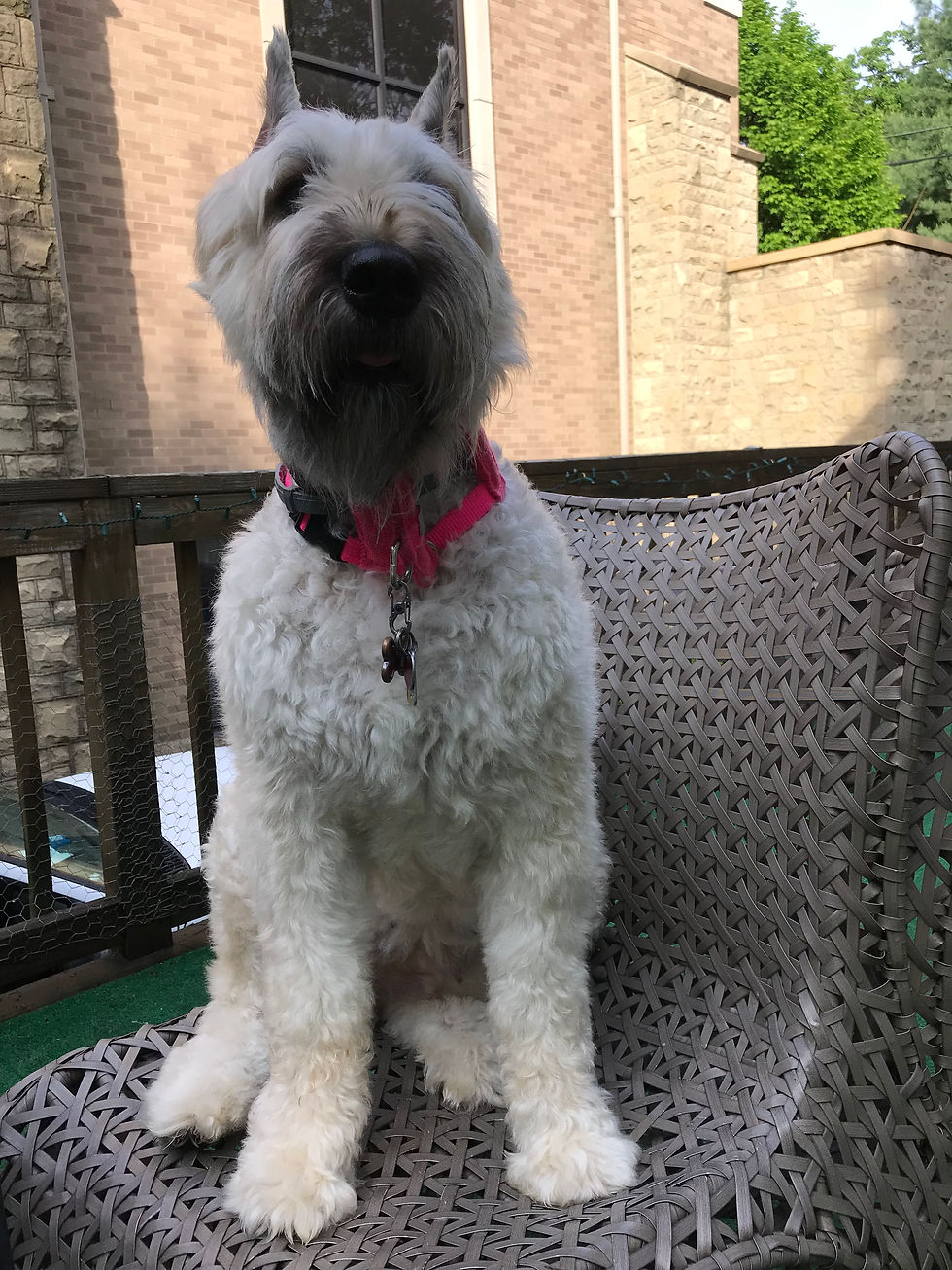EARLY BOUVIER GROOMING STYLES
- Boris Webb

- Mar 30, 2024
- 2 min read

In response to a follower asking for grooming information, I’ve been researching the Bouvier’s coat/shape history.
Prior to formal efforts to breed the Bouvier as a distinct canine “race” (European word for “breed”), all BdFS entered the breed club as “rough coated” with “sparse hairs” on their lower legs. It was a very practical coat for farm work: herding, livestock protection and cart pulling.
During WWI, up through 1918, no efforts were made to alter the coat or cut. There was simply no time or need for a dog that required for grooming.
Between the wars, some effort were made to modify the breed into a more uniform, distinct, physical appearance while also rebuilding the breed from a remenant gene pool after the devastation of thousands of dogs, of all breeds, during the hellacious trench war.
Just a few years lapsed, and in 1939, Europe was again escalating quickly into WW2. Until about 1945, the intelligence and utility of the Bouvier was valued over the luxury of fashionable coat. Again, thousands of dogs (all breeds and mixed breeds), were casualties.
Below, Jacqueline Bouvier Kennedy’s younger sister, Lee, poses with her beloved Caprice.
Black Jack Bouvier imported Caprice for his daughters simply because they were animal lovers and they shared a common name. Little did he expect his daughters would love Caprice so much there was no time to share her with the show ring (as initially expected).
Jackie wrote childhood stories about their adventures together.
Lee, when she once ran away from home, packed Caprice up with her and they left by taxi together for a day before rethinking the wisdom of living as a child-and-Bouv in a big world alone.
Also below, Mama Billie sports the 1900-1950s traditional, farm-dog, cut of a Bouvier des Flandres. While this is no longer a “show cut,” it’s certainly practical and easy to maintain.
Today’s Bouviers no longer naturally have “sparse” fur on their legs. Their coat has evolved, through rebuilding the breed after the wars and personal pet ownership, into a full-coat, where “rough” texture is preferred - but often created by stripping (grooming method) instead of naturally occurring with regularity.








Comments